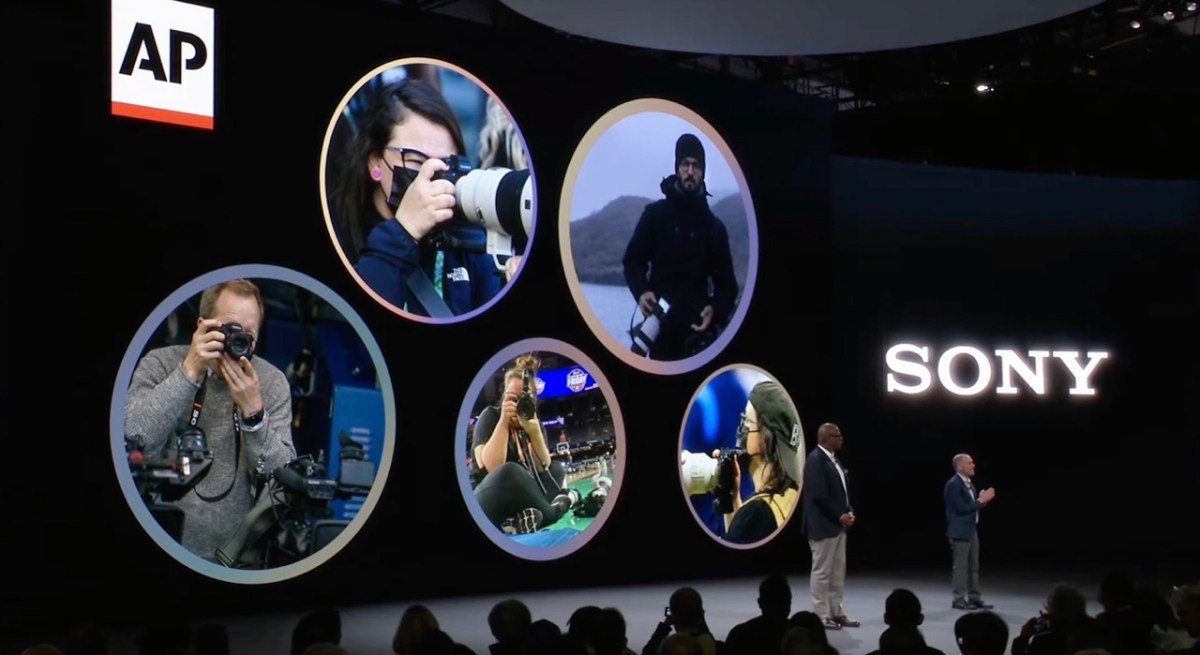The tech giant Sony has just announced a groundbreaking development at CES 2024 in Las Vegas. Known for its cutting-edge electronics, gaming, and entertainment products, the company has revealed an in-camera digital signature technology that aims to verify the origin of images captured with their devices. This innovation effectively creates a “birth certificate” for photos, playing a crucial role in the ongoing NFTs and content authenticity saga.
“Helping creators navigate opportunities while protecting the authenticity of their work is a priority. We’re collaborating with the Associated Press and other industry leaders to create a digital birth certificate for images shot on our cameras. This will validate the origin of their content and help safeguard facts and combat misinformation,” said Neal Manowitz, President and COO at Sony Electronics, during the Sony press conference.
This new technology will be integrated into the hardware of Sony cameras, starting with the upcoming Alpha 9 Mark III model. When an image is captured, a machine-based digital signature is generated, creating a unique identifier that can be tracked and verified. This process is similar to the blockchain technology used in NFTs, providing professionals, especially in journalism, with an added layer of security in the fight against manipulated images.
“While the rapid evolution of generative AI (Artificial Intelligence) brings new possibilities for creative expression, it has also led to growing concern about the impact of altered or manipulated imagery in journalism,” Manowitz explained. “The dissemination of false information and images has real-world social impact that brings harm not only to our photojournalist and news agency partners but to society as a whole.”
Sony has demonstrated that their in-camera signature technology works to prove the authenticity of photos and announced that it will be released in a firmware update for the Alpha 9 III, Alpha 1, and Alpha 7S III models later this year. While the reactions from industry professionals and the public remain to be seen, this advancement marks a significant step forward in the battle against image manipulation and the spread of misinformation. As previously discussed, this could be a critical tool in protecting truth and combating digital deceit.
“So, while Sony hasn’t literally launched an in-camera NFT, they’ve certainly created a system that mirrors the core functionality of an NFT – proving ownership and authenticity in the digital space.”
In a world where deepfakes and image manipulation are becoming increasingly sophisticated, Sony’s new technology could be a game-changing tool in the fight against digital deceit. And while it may not be a perfect solution, it represents a crucial step towards validating the authenticity of content and safeguarding against the distribution of false information.
The Future of Content Authenticity
This latest development from Sony serves as a reminder of the ever-evolving landscape of content authenticity. As technology continues to advance, so too do the methods of digital manipulation. It’s becoming increasingly crucial for companies and individuals to adopt measures that ensure the integrity and credibility of their creations.
- Establishing digital signatures:
- The use of blockchain technology:
- Collaboration and partnerships:
The concept of a “birth certificate” for photos is just one example of how digital signatures can help verify the origin of content. As seen with Sony’s technology, these identifiers can be machine-based and unique, making them difficult to replicate or manipulate.
The rise of NFTs has brought the concept of blockchain technology to the forefront of digital authentication. Its application extends beyond the world of art and collectibles, with potential uses in various industries, including journalism.
Sony’s collaboration with industry leaders and news agencies showcases the importance of working together to combat digital deceit. By joining forces and sharing resources, companies and individuals can stay one step ahead of manipulators and safeguard the authenticity of their content.
As we move towards a more digital and interconnected world, finding ways to validate the authenticity of digital content becomes increasingly crucial. Sony’s new technology may just be one piece of the puzzle, but it represents a significant step towards a future where the spread of misinformation can be more effectively fought against.








